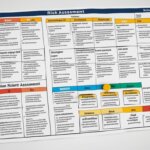Table of Contents
In today’s rapidly changing business environment, organizations face a range of potential risks that can threaten their operations, reputation, and long-term sustainability. Whether it’s a natural disaster, cyber-attack, or unexpected market downturn, the ability to anticipate and respond to unforeseen events is critical for maintaining business continuity and resilience.
That’s where contingency planning comes in. A contingency plan is a vital component of risk management, providing a structured approach for identifying potential hazards, assessing their likelihood and impact, and developing strategies for mitigating or adapting to them.
By integrating a contingency plan into their broader business strategy, organizations can gain greater insight into potential vulnerabilities and take proactive steps to minimize exposure and build resilience against unexpected events.
Key Takeaways
- A contingency plan is an essential tool for managing potential risks and building resilience in today’s unpredictable business environment.
- By identifying potential hazards and developing strategies for mitigating or adapting to them, businesses can protect their operations and maintain continuity in the face of unforeseen events.
- Effective contingency planning requires a comprehensive approach, including risk assessment, scenario planning, communication strategies, resource allocation, and regular testing and evaluation.
- Implementing a contingency plan demonstrates a proactive approach to risk management and serves as a valuable tool for navigating uncertain situations confidently.
- By prioritizing contingency planning as part of their broader business strategy, organizations can optimize their resilience and long-term sustainability.
The Importance of Contingency Planning in Risk Management
Contingency planning is an integral part of risk management, playing a critical role in ensuring the continuity of essential business operations. A comprehensive and well-designed contingency plan can help businesses effectively manage potential risks and minimize the impact of unforeseen events. The importance of contingency planning is highlighted by the fact that unexpected events such as natural disasters, pandemics, and cyberattacks can have severe consequences on business operations, resulting in financial losses and reputational damage.
Having a contingency plan in place can help businesses mitigate risks by identifying potential threats and outlining effective response procedures. A contingency plan can also provide a framework for essential communications and decision-making during a crisis, ensuring that all stakeholders are informed and knowledgeable about the necessary actions to be taken.
Furthermore, contingency planning can enhance an organization’s resilience by promoting a proactive approach to risk management. By having a well-thought-out and comprehensive contingency plan, businesses can display a willingness to anticipate and manage risks. It can also help businesses comply with regulatory requirements and industry standards, ensuring that they are prepared to handle any potential crises.
Components of a Contingency Plan
When developing an effective contingency plan, businesses should consider several critical factors that help mitigate the impact of unforeseen events. These components of a strong contingency plan include:
- Risk assessment: Identify potential risks and their likelihood of occurring in different operational areas.
- Scenario planning: Develop response protocols and strategies for various scenarios based on their impact and severity.
- Communication strategies: Establish clear communication channels and procedures to keep stakeholders informed about the response and recovery process.
- Resource allocation: Determine the budget, staff, and other resources necessary to execute the contingency plan effectively.
- Implementation processes: Create a detailed action plan that outlines the roles and responsibilities of all stakeholders and sets specific timelines for executing the plan.
By having a comprehensive contingency plan in place, businesses can remain agile, respond effectively to unexpected events, and minimize their impact on operations and revenues.
Implementing a Contingency Plan for Business Resilience
Creating a contingency plan is just the first step towards building business resilience. The next step is to implement the plan within the organization. By following the steps below, businesses can ensure that their contingency plan is effectively executed, and they are well-prepared to handle any potential disruptions.
Create Response Protocols
Develop response protocols that clearly outline the steps employees should take in the event of an emergency. These protocols should cover everything from identifying key decision-makers to communicating with stakeholders and implementing contingency measures. By having a defined set of response protocols, businesses can save valuable time and minimize confusion during a crisis.
Establish Clear Roles and Responsibilities
Ensure that there is a clear understanding of roles and responsibilities within the organization. It is essential to identify who is responsible for what actions during an emergency and communicate this information to all employees. This will help in avoiding duplication of efforts, ensure clarity in executing critical actions quickly, and achieve a seamless execution during any emergency.
Conduct Regular Drills and Tests
A contingency plan that is not tested is an incomplete plan. Regular drills and tests can help identify gaps and areas that need improvement. Based on the insights gathered from these practice sessions, businesses can refine their contingency plan to make it more efficient and effective in responding to unforeseen circumstances.
Evaluate and Update the Plan as Needed
A contingency plan is not a static document. It should be continuously reviewed and updated to remain relevant to the changing business environment. Businesses should conduct periodic assessments of their contingency plan to identify any required adjustments. With a contingency plan that is continuously evaluated and updated, the business ensures that it remains resilient to any potential disruptions.
Implementing a contingency plan is a proactive approach that businesses must adopt to build resilience against any potential disruptions. By defining response protocols, establishing clear roles, conducting regular drills, and continuously evaluating the plan, businesses can be well-prepared to handle any unexpected event and emerge from it with minimal impact.
Conclusion
In conclusion, having a comprehensive contingency plan is crucial for businesses to effectively manage risks and ensure resilience. In today’s unpredictable environment, it is not a matter of if but when a crisis will occur. By investing in contingency planning, businesses can mitigate potential risks, protect their operations, and minimize the impact of unforeseen events.
Implementing a contingency plan is a proactive approach to risk management that demonstrates a commitment to long-term sustainability. It involves creating response protocols, establishing clear roles and responsibilities, conducting regular drills and tests, and evaluating and updating the plan as needed.
Overall, businesses that prioritize contingency planning are better equipped to navigate uncertain situations with confidence and maintain their competitive edge. As such, it is essential for organizations of all sizes to develop and implement a robust contingency plan that aligns with their specific risks and objectives.
FAQ
What is a contingency plan?
A contingency plan is a strategic framework that businesses develop to mitigate potential risks and prepare for unforeseen events. It outlines a set of predetermined actions and procedures to be followed in response to a crisis or disruption, ensuring business continuity and minimizing the impact on operations.
Why is contingency planning important in risk management?
Contingency planning is crucial in risk management because it allows businesses to proactively anticipate and prepare for potential risks and disruptions. By developing a comprehensive contingency plan, businesses can minimize damage, protect their operations, and quickly recover from unexpected events, enabling them to maintain their competitive edge and ensure long-term sustainability.
What are the components of a contingency plan?
A contingency plan typically includes several essential components, such as risk assessment, scenario planning, communication strategies, resource allocation, and implementation processes. These elements work together to ensure that businesses are well-prepared to respond to various contingencies effectively.
How do you implement a contingency plan for business resilience?
Implementing a contingency plan involves various steps, including creating response protocols, assigning clear roles and responsibilities, conducting regular drills and tests, and evaluating and updating the plan as needed. By following these processes, businesses can enhance their preparedness, improve their ability to navigate uncertain situations, and build resilience against potential disruptions.












